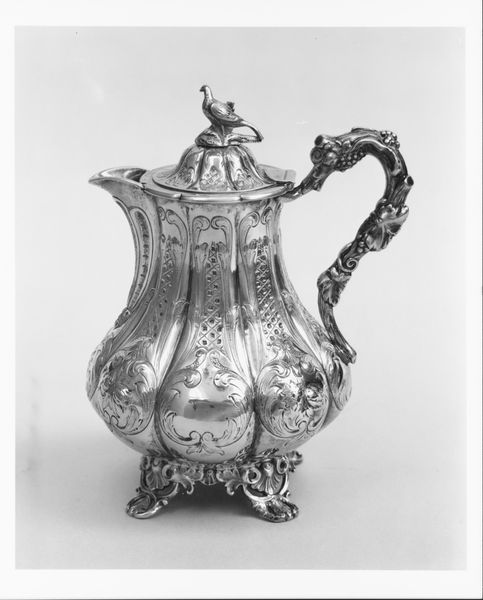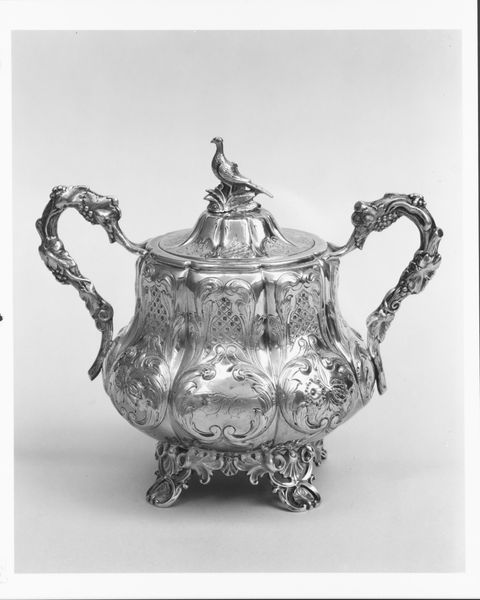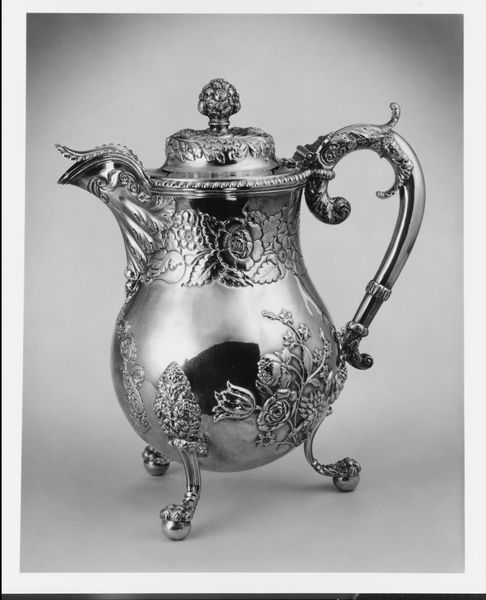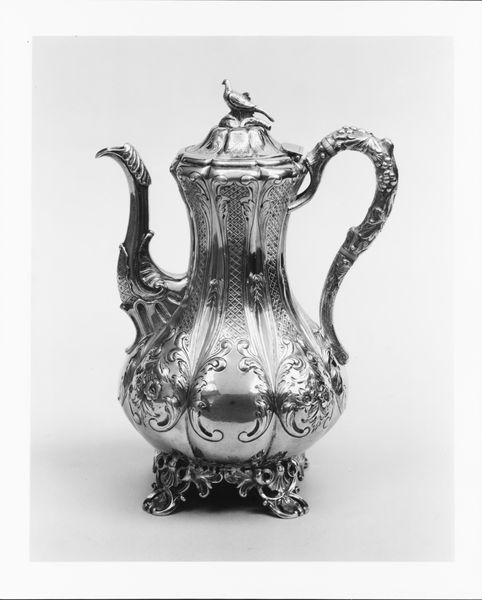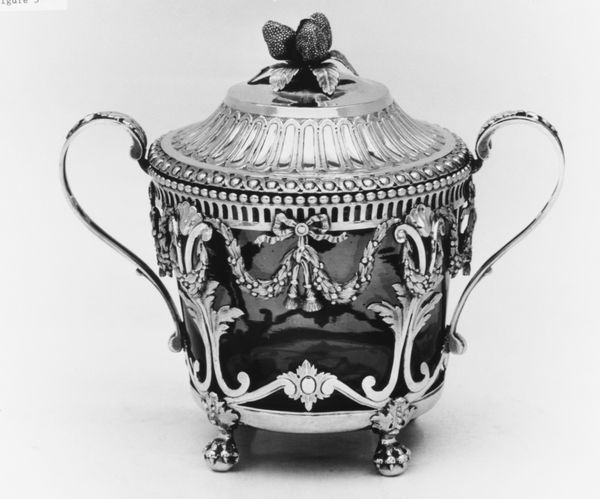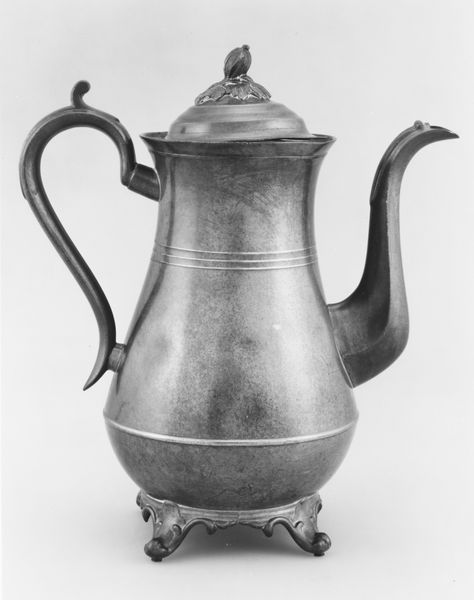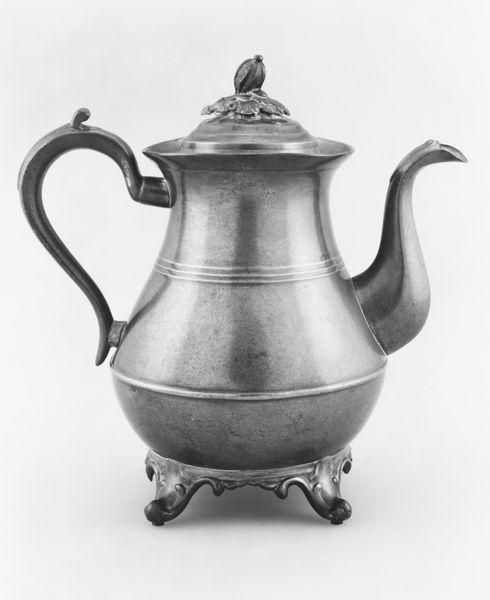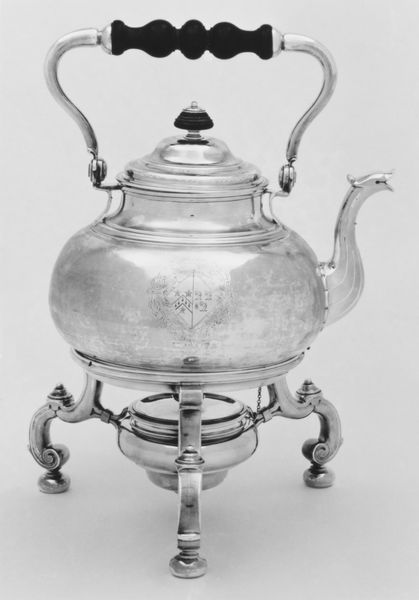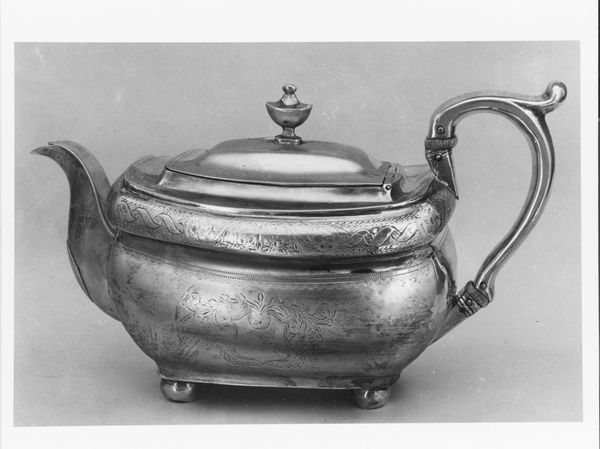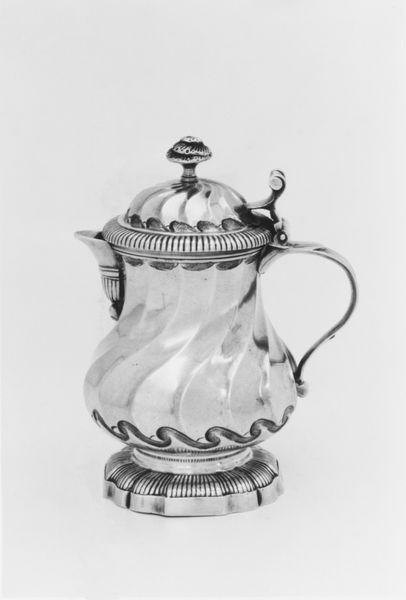
silver, metal, sculpture
#
silver
#
metal
#
sculpture
#
sculpture
#
united-states
#
decorative-art
#
realism
Dimensions: Overall: 14 1/2 x 9 5/8 x 8 1/4 in. (36.8 x 24.4 x 21 cm); 50 oz. 5 dwt. (1563.5 g) Body: H. 10 1/8 in. (25.7 cm); 31 oz. 3 dwt. (968.3 g) Stand: H. 4 3/4 in. (12.1 cm); 16 oz. 16 dwt. (523.2 g) Lamp: 1 9/16 x 2 7/16 in. (4 x 6.2 cm); 2 oz. 6 dwt. (72 g)
Copyright: Public Domain
Curator: This elaborate "Teakettle, Burner, and Stand" was crafted by Ball, Tompkins and Black between 1848 and 1851. It's silver, and it just looks so...ornate! I mean, how would you even begin to clean all of that detail? What strikes you about it? Editor: For me, it’s the sheer extravagance of it all. Knowing that this was made during the mid-19th century, I'm wondering, what kind of social and economic structures enabled such elaborate metalwork to be produced? Curator: Exactly. Let's consider the labor involved. Silversmithing of this caliber wasn't just about artistic skill; it was about access to resources, division of labor, and a consumer base that valued such intricate designs. What does the realism style tell you about its intended audience? Editor: It seems to reflect a desire for accurate representation and status. Is it implying a burgeoning wealthy merchant class wanting to emulate aristocratic styles, but through a distinctly American lens? Curator: Precisely! This piece straddles the line between art and commodity, intended for practical use but elevated through artistic skill. Silver itself became a symbol of wealth and taste, shaping social relations through its very presence. Now, does knowing it involves intense handwork alter your view? Editor: Definitely. Thinking about the unseen hands that shaped each curve makes me appreciate the artistry in a completely new way. The social conditions inherent to this work suddenly are visible within it, making it far more interesting to consider than just a pretty, antique teapot. Curator: Absolutely. Understanding the materials and their production processes enriches our understanding, challenging traditional distinctions of decorative art. The consumption becomes something other than what it seems when initially observing it. Editor: I hadn't considered the labor involved initially, but now I see how the materials, means of production, and the consumer all contributed to the status of the piece and its value beyond just monetary means.
Comments
No comments
Be the first to comment and join the conversation on the ultimate creative platform.
